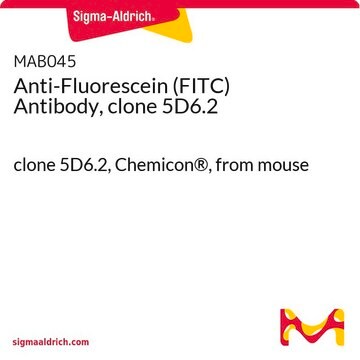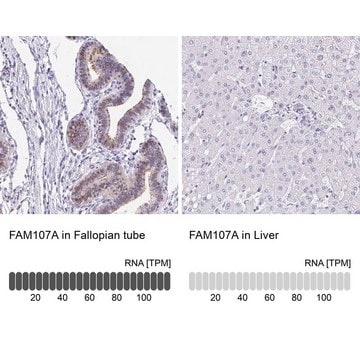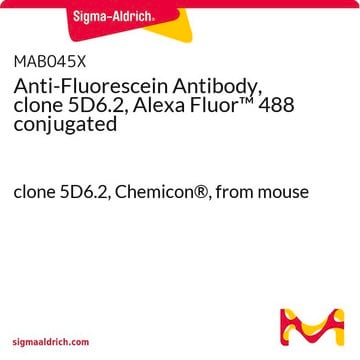11426338910
Roche
Anti-Fluorescein-AP, Fab fragments
from sheep
Synonyme(s) :
antibody
About This Item
Produits recommandés
Source biologique
sheep
Niveau de qualité
Conjugué
alkaline phosphatase conjugate
Forme d'anticorps
affinity purified immunoglobulin
Type de produit anticorps
primary antibodies
Clone
polyclonal
Forme
solution
Conditionnement
pkg of 150 U (200 μl)
Fabricant/nom de marque
Roche
Isotype
IgG
Température de stockage
2-8°C
Catégories apparentées
Description générale
Spécificité
Application
- Dot blot
- ELISA
- Immunohistocytochemistry
- In situ hybridization
- Southern blot
- Western blot
- Electrochemical biosensing technique for the detection of 16S rRNA
Actions biochimiques/physiologiques
Caractéristiques et avantages
Solution, stabilized
Notes préparatoires
- Working concentration: The following concentrations depend on application and substrate and should be taken as a guideline. Dot blot: 150mU/ml
- ELISA: 150 to 300mU/ml
- Immunohistocytochemistry: 250 to 500mU/ml
- In situ hybridization: 1.5 to 7.5U/ml
- Southern blot: 150mU/ml
- Western blot: 250 to 500 mU/ml
Working solution: 100mM Tris-HCl, 150mM NaCl, pH 7.5. If necessary 1% Blocking reagent (w/v), dry milk powder, 1 to 5% heat inactivated fetal calf serum (v/v) or sheep normal serum can be used for reduction of unspecific binding.
Autres remarques
Not finding the right product?
Try our Outil de sélection de produits.
Mention d'avertissement
Warning
Mentions de danger
Conseils de prudence
Classification des risques
Skin Sens. 1
Classe de danger pour l'eau (WGK)
WGK 1
Point d'éclair (°F)
No data available
Point d'éclair (°C)
No data available
Certificats d'analyse (COA)
Recherchez un Certificats d'analyse (COA) en saisissant le numéro de lot du produit. Les numéros de lot figurent sur l'étiquette du produit après les mots "Lot" ou "Batch".
Déjà en possession de ce produit ?
Retrouvez la documentation relative aux produits que vous avez récemment achetés dans la Bibliothèque de documents.
Les clients ont également consulté
Notre équipe de scientifiques dispose d'une expérience dans tous les secteurs de la recherche, notamment en sciences de la vie, science des matériaux, synthèse chimique, chromatographie, analyse et dans de nombreux autres domaines..
Contacter notre Service technique











